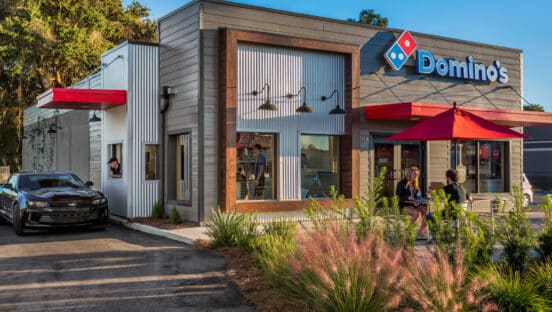The 500 largest U.S. restaurant chains registered slower growth rates, posting 3.4 percent annual sales growth in 2008.
According to data released today by Technomic Inc. in its annual reporting on the top U.S. restaurant chains, the leading foodservice consultancy found that U.S. systemwide sales for the Top 500 rose to an estimated $230.2 billion in 2008, up $7.6 billion over 2007.
“The data in this report clearly supports what we’ve been hearing in our consumer research surveys over the past year. Sales growth among the Top 500 restaurant chains slipped to 3.4 percent in 2008, versus 5.0 percent in 2007,” says Ron Paul, president of Technomic. “Many chains scaled back their U.S. unit expansion efforts, growing units by just 1.8 percent compared with 2.6 percent a year ago.”
Growth continued to come from the limited-service bakery cafe, coffee and other beverage, and hamburger categories with Panera Bread, Starbucks, and Burger King posting estimated 2008 sales growth of 16.2, 6.9, and 6.6 percent, respectively.
McDonald’s, the largest U.S. restaurant chain grew an estimated 4.4 percent with sales exceeding $30 billion.
Subway continued to dominate the growing other sandwich segment with 17.1 percent sales growth and total sales of $9.6 billion, considerably better than the 9.1 percent growth posted by the Other Sandwich chains collectively. It is now the second-largest restaurant chain in the U.S. followed by Burger King, Starbucks, and Wendy’s ranked third, fourth and fifth, respectively.
Limited-service chains within the Technomic Top 500 accounted for over 80 percent of all U.S. fast food restaurants. As a whole, this group grew at a rate of 4.5 percent.
Asian, which grew at 12 percent, was another limited-service sub-segment with sales growth above their segment average. Within this group, Panda Express, a California-based chain, grew 14.6 percent with estimated sales of $1.18 billion.
Growth continued to be driven by fast-casual chains. The Mexican category was led once again by Chipotle Mexican Grill and Qdoba Mexican Grill, posting estimated U.S. systemwide sales growth of 20.7 and 17.8 percent, respectively.
Standouts in the chicken segment included Wingstop and Zaxby’s with estimated sales growth of 23.6 and 17.9 percent, respectively.
Full-service chains within the Technomic Top 500 accounted for only 39 percent of all U.S. restaurants within this segment. As a whole, this group grew at a rate of 0.9 percent.
Asian, which grew at 9.3 percent, was the only full-service sub-segment with sales growth well above their segment average. Within this group, P.F. Changs China Bistro, an Arizona-based chain grew 8.7 percent with reported sales of $928 million.
Within Top 500 full-service restaurants, the real story was in the varied menu category which posted sales growth of only 1.5 percent compared to 5.4 percent sales growth in the prior year.
This category was affected by slowing unit expansion and closures, pressures from fast-casual chains at lunch time and retailers going after dinner business.
The Italian segment posted better-than-average sales growth of 3.4 percent.
Mexican, steak, and seafood categories posted below-average results with sales decline of 1.8, 0.7 and 0.4 percent, respectively. The Family-style restaurants showed only modest growth of 0.5 percent.
In total, the top 10 fastest-growing chains’ sales accounted for $4.9 billion, a 24 percent increase over 2007. Unit counts grew 22 percent.
Impressively, 4 chains with estimated sales over $2 billion achieved estimated double-digit growth in 2007 including Subway (17.1 percent), Panera Bread (16.2 percent), Chick-fil-A, (12.2 percent) and Olive Garden (10.2 percent).
Three of the four chains are limited-service concepts, with Olive Garden as the only full-service chain.
While the Top 500 chains posted strong growth in the aggregate, individual results varied dramatically with sales ranging from Buffalo Wings & Rings’ 89 percent estimated growth to Bennigan’s Grill and Tavern’s 33 percent estimated sales decline.
Only 56 percent of the Top 500 restaurant chains posted at least nominal sales increases; 213 of these chains suffered sales declines in 2008 compared to only 129 in 2007.
Both winners and losers appeared in each segment and menu category. These widely-mixed results demonstrate the overall competitiveness of the industry and the need for suppliers and operators to carefully identify and focus upon the winners.
International performance by the Top 500 restaurant chains significantly outperformed their domestic counterpart growth in 2008. International sales (up 13.4 percent) outpaced U.S. sales (up 3.4 percent); international unit growth was also up 9.9 percent versus 1.8 percent for U.S. units.





